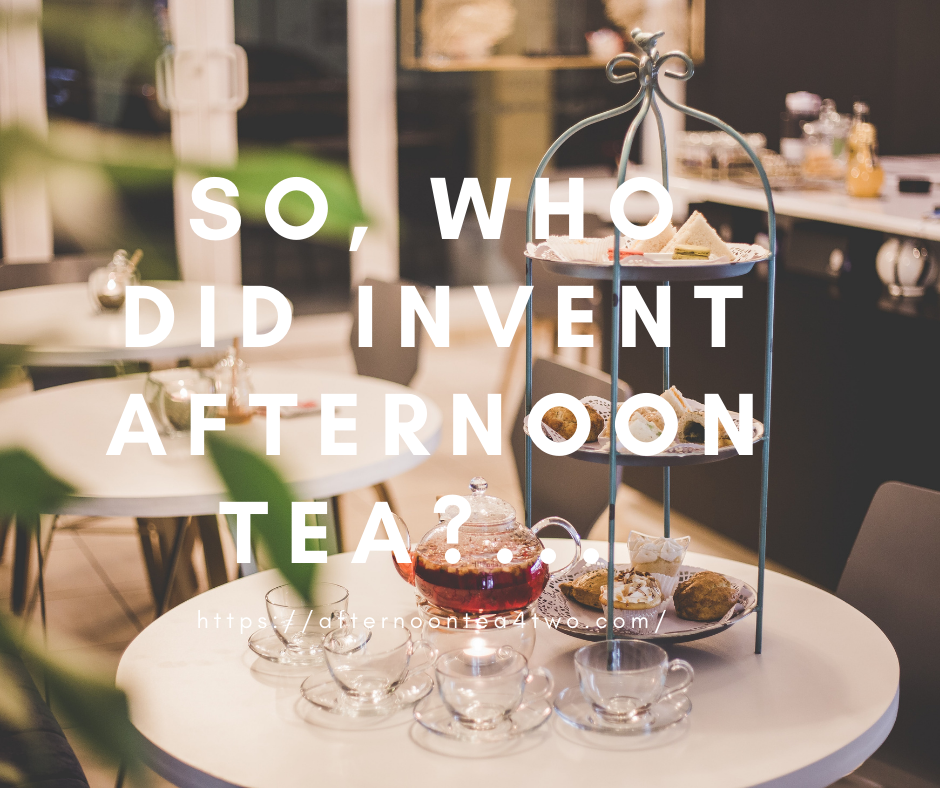Dinner, during the 18th century, was served between 7pm and 8.30pm and an extra meal called ‘luncheon’ was created to fill the midday gap. But as this meal was very light, people were left feeling hungry.
Legend has it that it was Anna Maria Russell, the 7th Duchess of Bedford of Woburn Abbey in Bedfordshire was the first person to develop the idea of afternoon tea. Apparently, she would ask her maid to bring all the tea making equipment to her private boudoir at around 5pm so that she could enjoy a cup of tea with a slice or two of bread and butter.
She found this afternoon tea such a perfect refreshment that she soon had friends joining her in her room for this new social activity. Friends were invited to join her in her rooms at Woburn Abbey and this summer practice proved so popular that the Duchess continued it when she returned to London, sending cards to her friends asking them to join her for “tea and a walking the fields.” Other social hostesses quickly picked up on the idea and the practice became respectable enough to move it into the drawing-room. Before long all of the fashionable society was sipping tea and nibbling sandwiches in the middle of the afternoon.
Ladies did not go to afternoon tea gatherings to eat but to meet their friends and catch up on gossip.
Occasionally you will see hotels serving a ‘high tea’. Traditionally, the upper classes would serve a ‘low’ or ‘afternoon’ tea around four o’clock, just before the fashionable promenade in Hyde Park. The middle and lower classes would have a more substantial ‘high’ tea later in the day, at five or six o’clock, in place of a late dinner. The names derive from the height of the tables on which the meals are served, high tea being served at the dinner table.
In the early 20th century and up to the Second World War, ‘tea dances’ were THE place to go, as the serving of Afternoon Tea had been backed by music and dancing, creating a lively ambience for fashionable young people to let loose in and enlarge their social circle.
Once the trend had been set, all the fashionable society started holding afternoon tea parties for every type of occasion. Drawing room afternoon teas soon turned into groups of 10 or 20 visitors. Then came the tennis teas, croquet teas and picnic teas.
Afternoon Tea has become a typically British tradition and is still very popular to this day, served at parties, weddings and cafes everywhere.
Source: Afternoon Tea Tea Time Yorkshire





No Comments
Reblogged this on Blogger Bar.